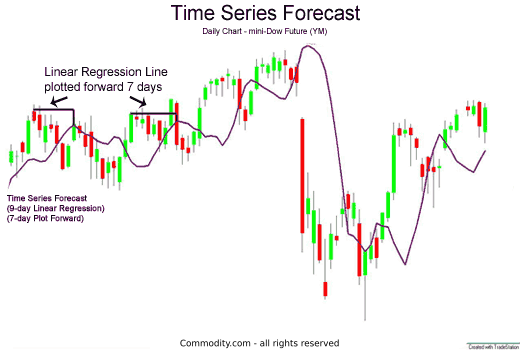Time Series Forecast

Time Series Forecasting: Your Crystal Ball for Predicting the Future
In the dynamic world of financial markets, predicting the future is a holy grail for successful trading. Time Series Forecasting, a powerful yet accessible technique, offers traders a unique way to anticipate price movements and make informed buying and selling decisions. Let’s explore what Time Series Forecasting is, dive into its historical significance, examine its advantages and limitations, and learn how and when to use it for precise trading strategies.
What is Time Series Forecasting?
Time Series Forecasting is a statistical method used to predict future values based on historical data. In the context of financial markets, it involves analyzing past price and volume data to make informed predictions about future price trends. This technique is widely used by traders and analysts to gain insights into market dynamics and identify potential buying and selling opportunities.
How Time Series Forecasting Works:
The process of Time Series Forecasting involves the following steps:
- Data Collection: Traders gather historical price and volume data for the financial instrument they want to forecast.
- Data Preprocessing: The data is then cleaned and organized to remove any noise or anomalies that could affect the accuracy of the forecast.
- Model Selection: Traders choose a suitable forecasting model based on the characteristics of the data and the specific requirements of the analysis.
- Model Training: The selected model is trained using the historical data to learn patterns and relationships between variables.
- Forecasting: Once the model is trained, it is used to predict future price movements and generate forecasts.
Pros of Using Time Series Forecasting:
- Future Insights: Time Series Forecasting provides traders with a glimpse into the future, helping them anticipate potential price movements.
- Data-Driven Analysis: The technique is based on historical data and statistical models, making it a data-driven and objective approach to trading.
- Identification of Trends: Time Series Forecasting can help traders identify trends, cyclical patterns, and seasonal effects in the market.
- Risk Management: Accurate forecasts allow traders to manage risk more effectively by making informed decisions.
Cons of Using Time Series Forecasting:
- Uncertainty: No forecasting method can guarantee 100% accuracy, and there is always a degree of uncertainty associated with predictions.
- Sensitivity to Data: The accuracy of Time Series Forecasting can be affected by the quality and quantity of historical data available.
- Complexity: Some forecasting models may be complex and require expertise to implement and interpret effectively.
When to Buy and Sell using Time Series Forecasting:
Time Series Forecasting can be used to identify potential buying and selling opportunities in the following ways:
1. Trend Identification: Forecasted price trends can help traders identify whether the market is expected to move upward (indicating a potential buying opportunity) or downward (indicating a potential selling opportunity).
2. Reversal Points: Forecasting models can also signal potential trend reversals when the price deviates significantly from the forecasted values.
3. Volatility Estimation: Forecasting can help estimate future price volatility, allowing traders to adjust their risk management strategies accordingly.
4. Confirmation with Other Indicators: Traders can use Time Series Forecasting in conjunction with other technical indicators to validate potential signals and enhance overall analysis.
Conclusion:
Time Series Forecasting is a powerful tool that offers traders invaluable insights into potential future price movements. Its ability to anticipate trends and provide data-driven analysis makes it a compelling choice for traders seeking to understand market dynamics.
However, traders should use Time Series Forecasting as one of several tools in their trading toolkit and exercise caution when making decisions based solely on forecasts. Market conditions are subject to change, and successful trading requires a comprehensive approach that combines analysis, risk management, and experience.
With Time Series Forecasting as your crystal ball, you’ll be better equipped to navigate the ever-changing landscape of financial markets and make informed buying and selling decisions. Happy trading!